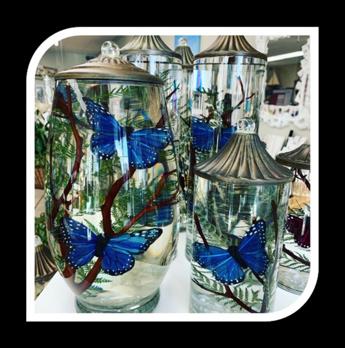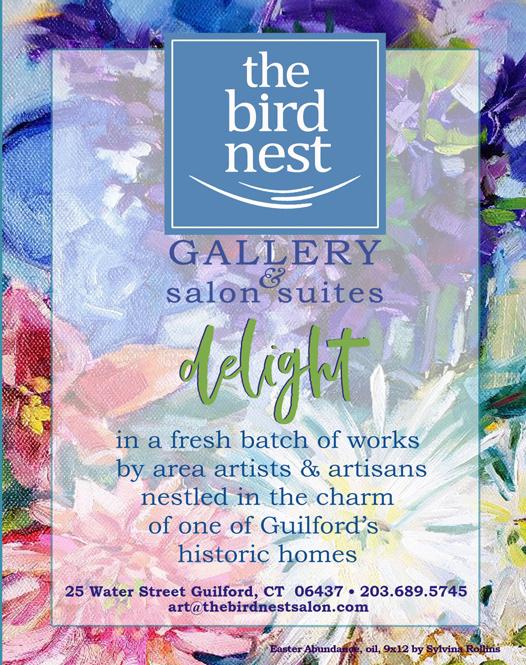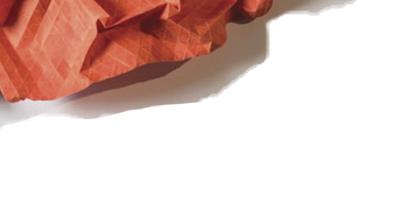
8 minute read
Ask Ashley Spring Clean Your Mind
How To Spring Clean Your Mind
6 Ways To Detox Your Mind, Body & Soul This Spring
Ah, Spring. It’s FINALLY in the air! After the Winter we’ve had — after the year we’ve had — this warmer weather and sunshine feels pretty damn well-deserved.
The Spring season is notorious for clearing out, decluttering, and refreshing, hence the term “Spring Cleaning.” While we’re busying ourselves with swapping bulky sweater bins with lighter knits and tees, I thought it would be keen to remind everyone that Spring Cleaning isn’t just for the home. It’s for the mind, as well.
And as we are all well aware by now, the mind is connected to it all — everything that embodies the mind-body-soul connection, including what we eat, what we wear, how we move, how we work, and who we hang out with — begging the question, why do we do it all? The answer, simple. To feel good. And furthermore, as we slowly (but surely!) begin to re-enter the real world with real, live meetings (farewell, Zoom?) and in-person gatherings, a mind-body detox may be just what we need to regain our pre-Covid confidence and pizazz. For that reason, I bring you 6 mind-care ideas to scrub negativity and doubt out for good this season.
For Your Mind
The “Spring Blues” is a new term to me. We all know the Winter Blues (a little too well), and even summertime sadness, but the Spring Blues? What in the hootenanny are they, and more importantly, how can we prevent them? According to Lifespan, the primary reason people experience anxiety in the Springtime is simply because of the change in weather. “Most people fear change to an extent, so any change brings on a certain level of anxiety. Because we have no control over the weather, when the most obvious and inescapable change is occurring in the environment, we can feel lost and depressed.” Makes sense. Ways to combat the Spring Blues are pretty straightforward, nothing we haven’t heard before: exercising, cleaning, spending time outside, making time to relax, and checking in with your diet.
But perhaps a more concrete way of detoxing your mind is (1) setting an intention for the season. Think of your intention as your daily reminder of what you want to achieve this Spring season. Identify a word or phrase that describes the overarching feeling of something you want to achieve. Maybe it’s business-related, maybe it’s more personal.
15




188 Main Street Old Saybrook 860.339.3108 w www.PiecesHomeDecor.com
Visit our online shop 24/7 and don’t forget to follow us on Instagram and Facebook too.























21



water views and fire pits, it is the perfect place to begin a memorable weekend destination getaway. Rocks 21 offers guests 24 craft beers on tap, a full bar, appetizers with a twist (think lobster nachos!), New England favorites like clam chowder, lobster bisque, calamari, scallops, and fish and chips all fresh from local waters, as well as a Sunday brunch with choices for every appetite from avocado toast to lobster crepes to the perennial favorite of lox, bagel, and cream cheese, to a mouth-watering coffee cake plate among many other choice favorites.
First-class accommodations are offered here at The Inn of Mystic. Once a private estate, it is the highest point in Mystic and an historic New England edifice dating back to 1904, listed on the National Registrar of Historic Places in America, redolent of the history and tradition of the area. The centerpiece of it all is The Haley Mansion, a stately Queen Anne structure first built by Catherine Haley, a member of a prominent area family and later occupied by W. Frederick Mosel, a Hollywood-type advertising executive and financier with an appetite for lavish parties. He added the Gate House which today includes four guest suites in addition to other luxury room options throughout the Inn. In all, there are 52 rooms at the Inn in the main building, East Wing, and Haley mansion, all of which are unique unto themselves but possess a turn-ofthe-century charm with modern amenities and private baths. The much sought-after Deluxe,










Since the bombing of Hiroshima the origami crane has also come to represent peace because of a young girl named Sadako Sasaki who was exposed to the bomb’s radiation. Sasaki, upon learning at age 12 that she was dying from leukemia, folded a thousand cranes in hopes her wish to live would be granted. When she passed away, she was buried along with the 644 cranes she had folded before her death and an additional 356 cranes that were folded by her schoolmates to equal one thousand. A statue in her honor was erected in the Hiroshima Peace Park, and each year 10,000,000 cranes are placed at its foot).

The art of paper folding fi nds its roots in sixth-century Japan after being introduced by Buddhist monks who brought the permeable materials with them from China. Because handmade paper was very expensive, it was used sparingly and for religious purposes only. However, this changed in the early 1600s when paper was mass-produced and suddenly became affordable. While the Chinese are credited with the invention of paper (circa 105 A.D.), it is the Japanese who initially employed the use of multiple cuts and folds creating a new art form, which became known as origami.
Akisato Rito, a writer, artist, and poet from Kyoto, Japan, penned the fi rst written guidelines for paper folding in 1797, making this art form more accessible. Rito’s directions were for the thousand crane folding, a bird that is considered mystical and holy in the Japanese culture. Legend has it that anyone who folds one thousand cranes will receive their greatest desire.
In the 1800s, origami became a popular school activity after Friedrich Froebel, the German educator who invented kindergarten, recognized the attributes paper folding had in teaching children about art, beauty, and geometry. Suddenly, kids all across Europe were learning this ancient art. In the United States, Lillian Oppenheimer is acknowledged for popularizing origami in this country. After discovering the “Flapping Bird,” one of origami’s most well known and identifi able designs, she sought to learn all she could and share her fi ndings with the world. She wrote several books on the subject, was featured in newspapers and on radio and television, founded the Origami Center of America to create a global network of folders, and taught origami to anyone who wanted to learn including the Red Cross, the Boy Scouts, and the Girl Scouts, and to residents in old age homes. The wealth of information and knowledge she amassed is still accessible to all and overseen by the Friends of the Origami Center of America, a non-profi t organization headquartered in Oppenheimer’s hometown of Manhattan.
While we may think of origami solely as an artistic endeavor, many mathematicians use it as a way to solve equations as the Moors fi rst did in the 12th century with their approach to paper folding. Many origami artists such as Ben Parker have adapted these techniques to create abstract and geometric designs that are then turned into wall art.
Parker has been “fi ddling with paper” and folding origami recreationally since childhood. Although he studied languages and literature while at the University of Pittsburgh and Central Connecticut State University with a desire to become a linguist and translator, he says, origami took over.



